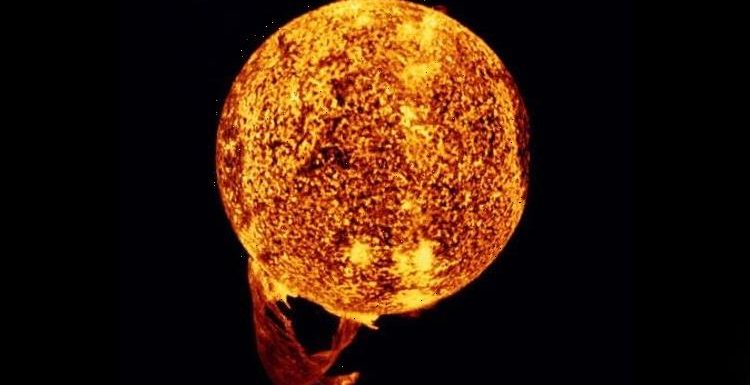
Solar storm could cause ‘catastrophic damage’ to UK
We use your sign-up to provide content in ways you’ve consented to and to improve our understanding of you. This may include adverts from us and 3rd parties based on our understanding. You can unsubscribe at any time. More info
A study put out by researchers at the University of California, Irvine, identified the biggest danger to global Internet security comes from space. Major solar activity – the kind that has not occurred in more than 100 years – has the potential to unleash a devastating “Internet apocalypse”. In a world that relies on the Internet for its smooth operation, solar storms have the power to disrupt critical services and rack up losses to the value of £5billion ($7billion) a day in the US alone.
According to Sangeetha Abdu Jyothi, a Professor of Computer Science and the study’s author, even a few minutes of a global Internet outage would be catastrophic.
And in a worst-case scenario, the outage could last for days or even months.
In her paper, titled Solar Superstorms: Planning for an Internet Apocalypse, Professor Jyothi wrote: “The Internet has played a key role in helping us deal with the coronavirus pandemic, a recent black swan event.
“However, Internet researchers and operators are mostly blind to another black swan event that poses a direct threat to Internet infrastructure.
“In this paper, we investigate the impact of solar superstorms that can potentially cause large-scale Internet outages covering the entire globe and lasting several months.”


Major solar storms have lashed the planet in the past but these occurred before the advent of the Internet, satellite technology and high-speed communications.
The biggest solar storm on record occurred in 1859 and is known as the Carrington Event.
Triggered by a coronal mass ejection (CME) – a large expulsion of plasma and magnetic field from the Sun – the storm fried telegraph wires across North America and Europe, sparking several fires.
Particularly strong CMEs can be sent hurtling our way by so-called solar “tsunamis” on the surface of the Sun.
According to NASA, these are waves of hot plasma that rise higher than Earth and ripple out in a circular pattern millions of miles in circumference.
If one of these solar tsunamis caused a Carrington-level event today, it would lead to widespread blackouts, knock out satellites and plunge the planet into a state of chaos.
Observatory captures INTENSE solar storm
In her study, Professor Jyothi said some 20 to 40 million people in the US could be left without access to power for up to two years.
A similar-sized event came dangerously close to hitting the planet in 2012 but narrowly missed.
It was estimated at the time the total economic impact of the storm would have surpassed £1.45trillion ($2trillion).
Professor Jyothi has now warned global Internet infrastructure may be unprepared for such an event.
In particular, Internet cables that run along the seabed could suffer crippling damage and are at “greater risk of failure” compared to land cables.
The expert added: “The probability of occurrence of extreme space weather events that directly impact the Earth is estimated to be 1.6 percent to 12 percent per decade.


“More importantly, the Sunn was in a period of low activity in the past three decades from which it is slowly emerging.
“Since this low phase of solar activity coincided with the rapid growth of technology on the Earth, we have a limited understanding of whether the current infrastructure is resilient against powerful CMEs.”
Life on Earth is protected from solar activity, for the most part, by the planet’s atmosphere and magnetic field.
But the same protection does not apply to technology like satellites and spacecraft.
Solar storms can also affect technology on the ground, as was the case in 1989 when the entire province of Quebec in Canada suffered a power blackout.
According to NASA, a powerful explosion on the Sun released a billion-ton cloud of gas directly towards our planet.
The resulting solar storm caused the Quebec power grid to fail in a matter of minutes.
And before that, the most powerful solar storm of the 20th century occurred in May 1921.
The so-called New York Railroad superstorm knocked out the New York telegraph and railroad systems, while also causing damage worldwide.
Professor Jyothi said: “Paying attention to this threat and planning defences against it, like our preliminary effort in this paper, is critical for the long-term resilience of the Internet.”
Source: Read Full Article